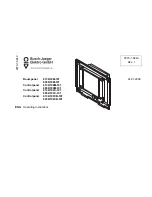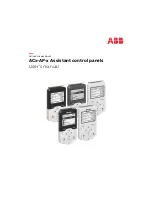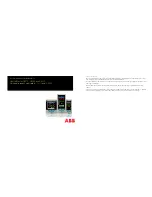
- 13 -
B. Alternator testing
Test A -
The alternator and regulator can be tested for function by determining if a magnetic field exists at the
alternator’s pulley shaft or rear bearing. To test:
1.
With the ignition in the OFF position, place the tip of a steel screwdriver near the nut on the pulley shaft or near the
rear bearing of the alternator. There should be no evidence of a magnetic field pulling the screwdriver toward the
alternator. (A slight amount of magnetism may be present, due to residual voltage in the alternator.
2.
Engage the ignition, without starting the engine, to activate the voltage regulator. If an oil pressure switch is used, a
jumper between the RED and BROWN wires in the Ford-style plug will activate the regulator.
3.
After allowing time for the regulator’s start-up delay, place the head of a steel screwdriver near the nut on the pulley
shaft or near the rear bearing of the alternator. There should be substantial magnetic pull. If a magnetic field is pres-
ent, the voltage regulator, alternator brushes and rotor are likely to be working
properly.
Test B
- If there is little or no magnetic pull at the pulley shaft or at the rear bear-
ing, initiate the following test:
1.
With the key off and the engine off, remove the large harness plug from the regula-
tor.
2.
Insert the end of a short length of electrical wire to the RED connector slot of the
regulator harness and the other end of the wire to the BLUE connector slot. (See
Figure 24.) This bypasses the regulator and tests the alternator and the harness.
3.
Using your steel screwdriver, inspect for a magnetic field as described above.
4.
With your voltmeter, check for voltage on the blue wire at the alternator. If voltage
does not exist, the harness may be at fault. If voltage does exist at the harness, but
no magnetism is present, the alternator is likely to be malfunctioning.
If a magnetic field is present. Both harness and alternator brushes and rotor appear to be working properly. If
no magnetic field is present, proceed with the next test.
Test C
- Testing the actual output of the alternator is known as “Full Field Testing”. This can be accomplished
by jumping a positive 12VDC current to the field terminal at the rear of the alternator. This test eliminates both
the regulator and the harness, making it easier to isolate your investigation to the alternator. CAUTION: Ensure
that all voltage sensitive equipment is turned off prior to starting the engine. Voltage is unregulated during this
test and could damage sensitive electronics. DO NOT let the engine run any longer than necessary to detect
charging. If the system is not charging, remove the alternator and have it inspected by a qualified alternator
shop, or call Balmar for warranty evaluation.
To test the alternator:
1.
Clip a jumper wire to the positive post of the alternator, or on the battery side of the isolator (if an isolator is in use).
Use a SHIELDED alligator clip for post attachment. Unintentional contact between the alligator clip and the alter-
nator case could result in damage to your electrical system.
2.
Disconnect the field/stator plug from the rear of the alternator and attach the other end of the jumper wire to the alter-
nator’s Field terminal (F). Attach a female spade connector to the field end of the wire for a solid connection. CAU-
TION: Do not allow the wire to contact the case while it is attached to the positive post. The case is grounded and
severe damage could occur.
3.
The regulator is now bypassed. When the ignition is engaged and the motor is started, the voltage should rise and
charging current should be present.
4.
The motor should be run long enough to determine that charging voltage is present. Unregulated voltage can rise
quickly. Do not allow extended unregulated charging to occur without carefully monitoring voltage levels.
If the alternator fails to generate voltage during field testing, a malfunction of the alternator is likely. Contact
your local alternator repair shop or Balmar’s technical service staff for recommendations.
C. Conclusion
If your readings differ substantially from the “Expected Readings” listed in the troubleshooting charts, the reg-
ulator may be malfunctioning, or there may be a continuity problem. Contact our technical support staff at (360)
435-6100. If you determine that repair service is necessary for either your alternator or regulator, please gath-
er the following information before contacting our service technicians: Make and model of alternator. Model of
voltage regulator and date of mfg. (date punched on rear side label of regulator). Voltage readings on red, brown
and blue wire at regulator with engine off, key on. Voltage readings on red, brown and blue wire at regulator
with engine running at a fast ideal 1400 rpm.
R
Bl
F
Fiiggu
urree 2
24
4 - Jumping power wire
to field.
Summary of Contents for Max Charge MC-612
Page 15: ...15...



































